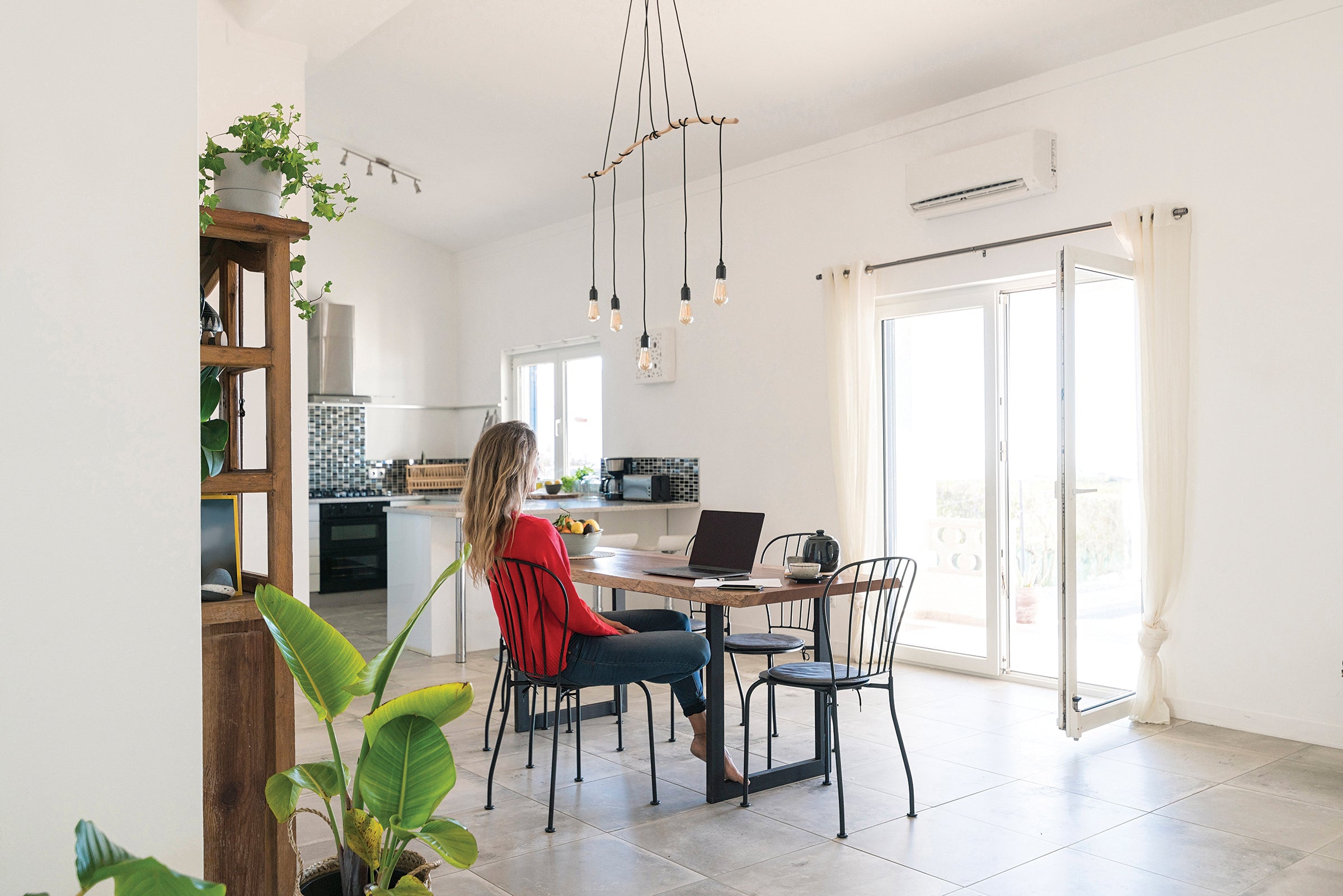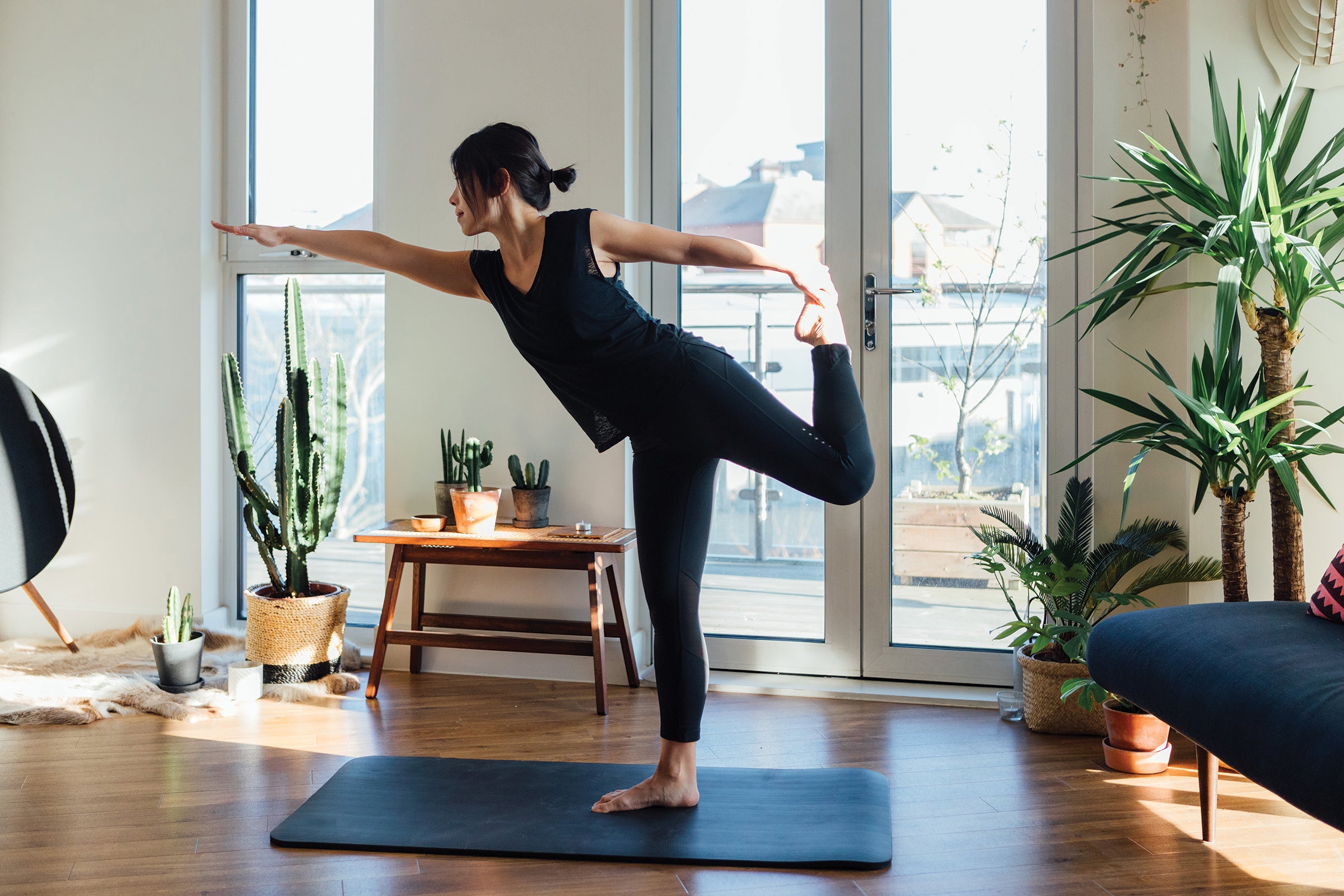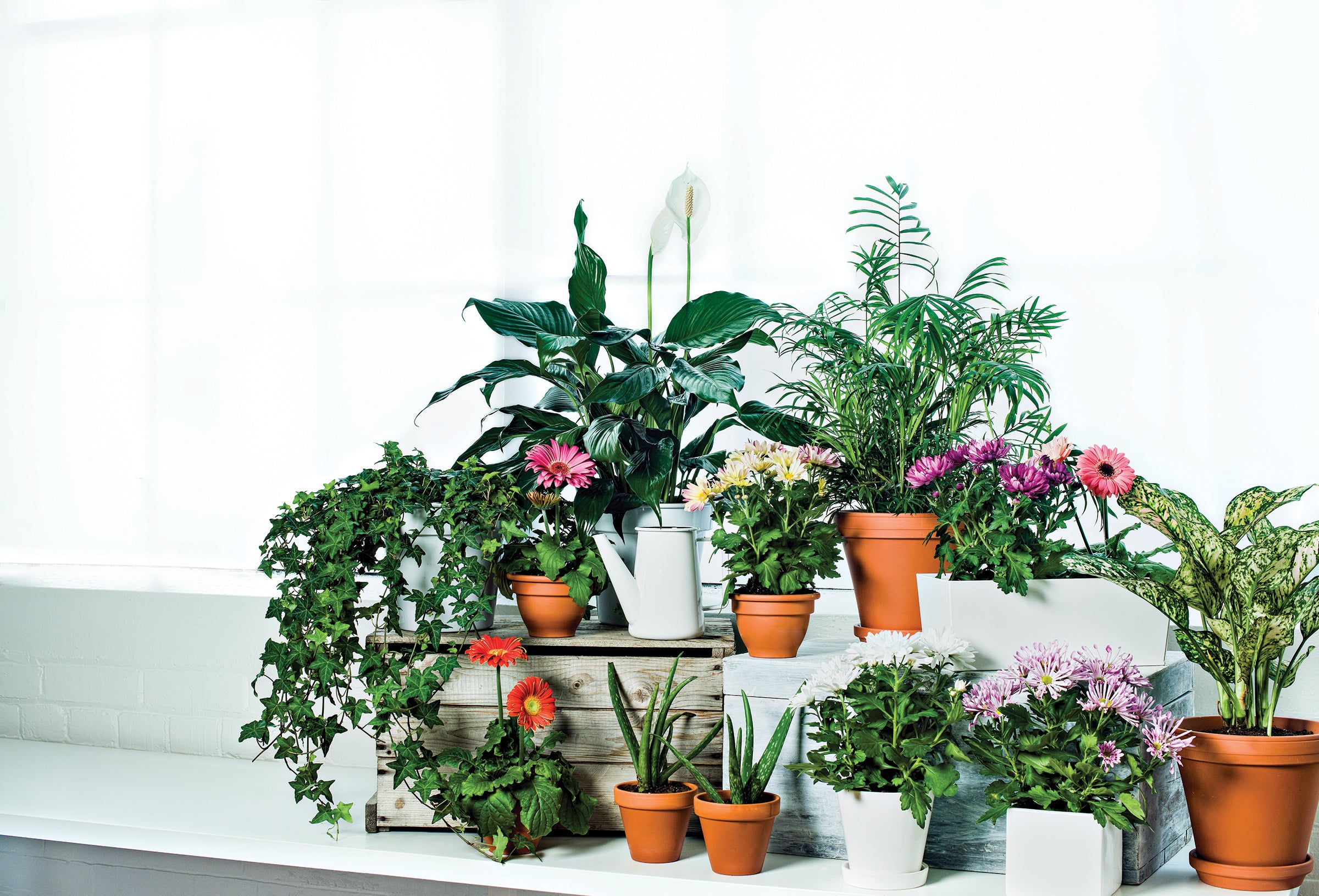New perk! Get after it with local recommendations just for you. Discover nearby events, routes out your door, and hidden gems when you sign up for the Local Running Drop.
It’s hard to believe it’s been a year since we first began sheltering in place. Back then, we thought working from home would be something we would do for a few weeks, maybe a month, and then life would go back to normal.
Now we know better. Even as things open up in some places and vaccines go from theoretical to real, working from home—and spending most of the day at home—remains part of the new normal. Though you might have taken some stopgap measures and cobbled together systems for organizing your home for a work-life balance, it’s time to take a step back and really examine what’s working and what isn’t and to strategize on how to set up an optimal environment to make spending time at home safe, comfortable, healthy and efficient.
Your Healthy Home
Prevent Clutter
“Physical clutter creates mental clutter, which decreases productivity,” says organizing expert Rachel Rosenthal. Be sure to regularly declutter your space so that it doesn’t become overwhelming. “I’m a big believer in a nightly or weekly reset,” Rosenthal says. “Take a few minutes at the end of the day or end of the weekend [and] walk around with a basket picking up anything that isn’t where it belongs and take it back to its home.”
Keep the Air Clean
If you never gave much thought to the air quality in your home before, now’s a good time to consider it. “In most areas, the outdoor air quality is better than the indoor air quality,” says indoor environmental professional Michael Schrantz, founder of indoor environmental health assessment company Environmental Analytics. The easiest way to improve air quality in your home is to open windows or sliding doors to allow air to circulate, Schrantz says.
Keeping clutter at bay and dusting frequently are also helpful, he notes. In addition, he recommends regulating moisture in the home, keeping it less than 50%, especially in the summer, which can help prevent mold growth and the proliferation of dust mites. Air conditioning is usually enough to keep moisture under control in the summer months, but in very humid parts of the country, you may need a dehumidifier as well as your air conditioning, he says.
And going green with your cleaning products also makes good sense, according to the Environmental Protection Agency, because volatile organic compounds (VOCs) in traditional household cleaners can affect indoor air quality.
Work Smarter

Set Up a Comfortable Work Area
Whether you’re lucky enough to have a dedicated home office or your work space is somewhere in a crowded apartment, keeping your work materials organized will help minimize clutter, lost items, and general aggravation.
“Just about every home office space needs to do double duty, so make sure you’re thinking of the functionality of the space for more than just working hours,” Rosenthal says. “I suggest utilizing an acrylic desktop mail center to allow for storage of things like scissors and pens, and as a spot for mail and keys that would previously have been strewn on the desk area.” If you have kids who may come into your work area during business hours, Rosenthal recommends keeping a drawer or bin of coloring items. It’s helpful if you’re homeschooling, and it’s also a simple way to occupy them.
She also suggests keeping a desktop basket or file sorter with crisp white file folders to cleanly manage papers, and, similarly, she recommends having an organized system for digital files so you know where to find everything and keep your screen uncluttered. Rosenthal recommends clearing off your desk or work space at day’s end. Keep a drawer or bin nearby to neatly store items for the next day, and build that quick cleanup into your routine.
Watch Your Posture
If you don’t have an ergonomic chair or a standing desk, you may find yourself slouching during the day, which can lead to a sore neck or back. Good posture also can help keep you feeling energetic because your muscles are working more efficiently. If you’re sitting, keep your back straight, shoulders back, and bottom against the back of the chair, with your body weight evenly distributed on both sides. Keep your feet flat on the floor; don’t cross your legs. Make sure to get up at least every 30 minutes.
Feel Your Best

Create a Schedule
Before the pandemic, your workdays were likely punctuated by a commute home. When you work from home, the boundaries between work and the rest of your life can be blurry, making it harder to get the breaks you need, notes Susan Albers, PsyD, a clinical psychologist with the Cleveland Clinic.
“It’s important to have a shutdown time or end of day for your phone, making sure that you’re not answering any more calls as well as email,” she says. “It’s also helpful to have some boundary between your home space and your workspace. So make sure that you move physically away from your computer, the space where you tend to work.”
If that isn’t possible—say, the kitchen table is now your office: “Be very clear about what your boundaries are,” she says. “Either announce it [to colleagues], or you can create an automatic response message at a certain time that says when you will be back.”
Along with building in breaks, having a clear-cut schedule can help minimize stress. “We are creatures of habit and we love routine. We get a sense of control and predictability by knowing what’s coming,” Albers says. Having a schedule “takes off some of the mental stress because when we get into a routine, we don’t have to think about it… We don’t struggle emotionally with it, we just do it.”
Get More Vitamin D
“There’s a correlation between low vitamin D levels and depression and anxiety. So the more that you can do to increase that vitamin D level, the better,” Albers says. “Whether it’s the sunlight, supplements, vitamin D–rich foods—all those can be really helpful.” Good sources of naturally occurring vitamin D include egg yolks and fatty fish such as salmon, trout and mackerel.
Eat Well
Some of the conveniences of working from home are welcome, but proximity to the kitchen can be problematic if you’re in and out of it all day, snacking mindlessly. Avoid the all-day nosh-a-thon by scheduling in your meals and a snack. “Actually put them on your calendar,” says registered dietitian Sydney Greene. “Scheduling out when you’re going to nourish yourself is a form of self-care.”
To minimize the urge to nibble, make sure your meals are satisfying, she adds, noting that while you might think it’s healthier to eat a “light” meal, you’ll only feel hungry soon after and end up snacking.
Minimize Cooking Fatigue
Having to prepare three meals a day can tire out even the most avid home cook. The solution: Be flexible around what you eat when. “Breakfast food doesn’t necessarily have to be only for breakfast time, it could be at dinnertime. And vice versa, lunch or dinner food can be breakfast,” Greene says. With this in mind, cook more elaborate meals when you have more energy. If that’s the morning, focus on making a bigger meal then, and have simple fare like oatmeal or scrambled eggs for dinner.
Another strategy is to do little bits of prep throughout the day, and use those moments as a break from sitting, Greene says. Schedule 10-minute breaks every hour to stand up and move, and when you do, chop an onion or measure out your spices. By the end of the day, you’ve added some movement to your day, and making dinner will be quick and easy.
Exercise in Short Spurts All Day
You don’t have to find 30- to 60-minute time slots in your day to work out; taking quick workout breaks throughout the day can be just as effective. A University of Texas study found that short bursts of exercise peppered throughout the day may help boost fat metabolism and offset the effects of being sedentary. Schedule fitness “snacks” between calls or on the hour. You can do a set of five to 10 pushups or dips, jump rope or do jumping jacks for a minute, go up and down the stairs a few times or do a set of 10 to 15 squats or lunges.
Set Up a Sleep-Friendly Bedroom
Artificial light at night can disrupt sleep by increasing alertness and blunting the body’s secretion of melatonin, a hormone that helps manage your sleep-wake cycles. To optimize sleep, cover windows with blackout shades and move light-emitting devices such as cell phones to another room. Also keep temperature in mind: Your core body temperature dips at night, which helps you feel sleepy, so setting your thermostat between 60 and 67ºF can help you feel drowsy and fall asleep more easily.
Prevent Cabin Fever
It’s no secret that feeling cooped up and trapped is stressful—luckily, there are strategies to combat it.
For one, make sure you get outside every day; research shows that exposure to nature can benefit mental health and give you a general feeling of well-being. Another strategy is to make a list of tasks you’ve been meaning to get around to and take steps to complete them. For example, you might have a closet you’ve been meaning to organize, photos you’ve wanted to digitize, or clothing to gather and donate or recycle. In moments of restlessness, you can grab that list and tackle one.
Small acts of kindness also can boost happiness, according to University of Oxford researchers. Send a card or gift to a friend in need, buy a stranger a coffee, or check out VolunteerMatch.org or other volunteer organizations to find safe ways to help out and give back that fit within your schedule.
Find Balance
The pandemic may have caused you to be both isolated and too crowded simultaneously. You may be isolated from friends and family you don’t live with while being around immediate family members constantly. Finding a little solitude and also some connection are key, Albers says. “It’s important to have some ground rules within the house around what kind of space you need and how often and communicating that really clearly to your family members,” she says, adding that it’s helpful to make it clear that this is something you need for yourself and not a rejection of them. “For the people on the other end of the extreme who don’t have a lot of connections, putting in that effort is incredibly important. We need connection for our mental health. So this is a great time to reach out to people through email, Zoom, and good old-fashioned phone calls.”
Purify with Plants

Did you know it was NASA that discovered that some common indoor household plants can purify the air inside your home? It’s true! NASA even calls these plants “nature’s life support system.” Certain indoor plants absorb particulates from the air as the plant takes in carbon dioxide. These harmful compounds are then turned into valuable oxygen through photosynthesis. Several of these plants can even filter out toxic volatile organic compounds (VOCs) found in carpets, paint, and other materials within the home. These pretty plants are perfect for this air-purifying project:
- Bamboo palm
- Peace lily
- English ivy
- Gerbera daisy
- Aloe vera
- Chrysanthemum
- Chinese evergreen